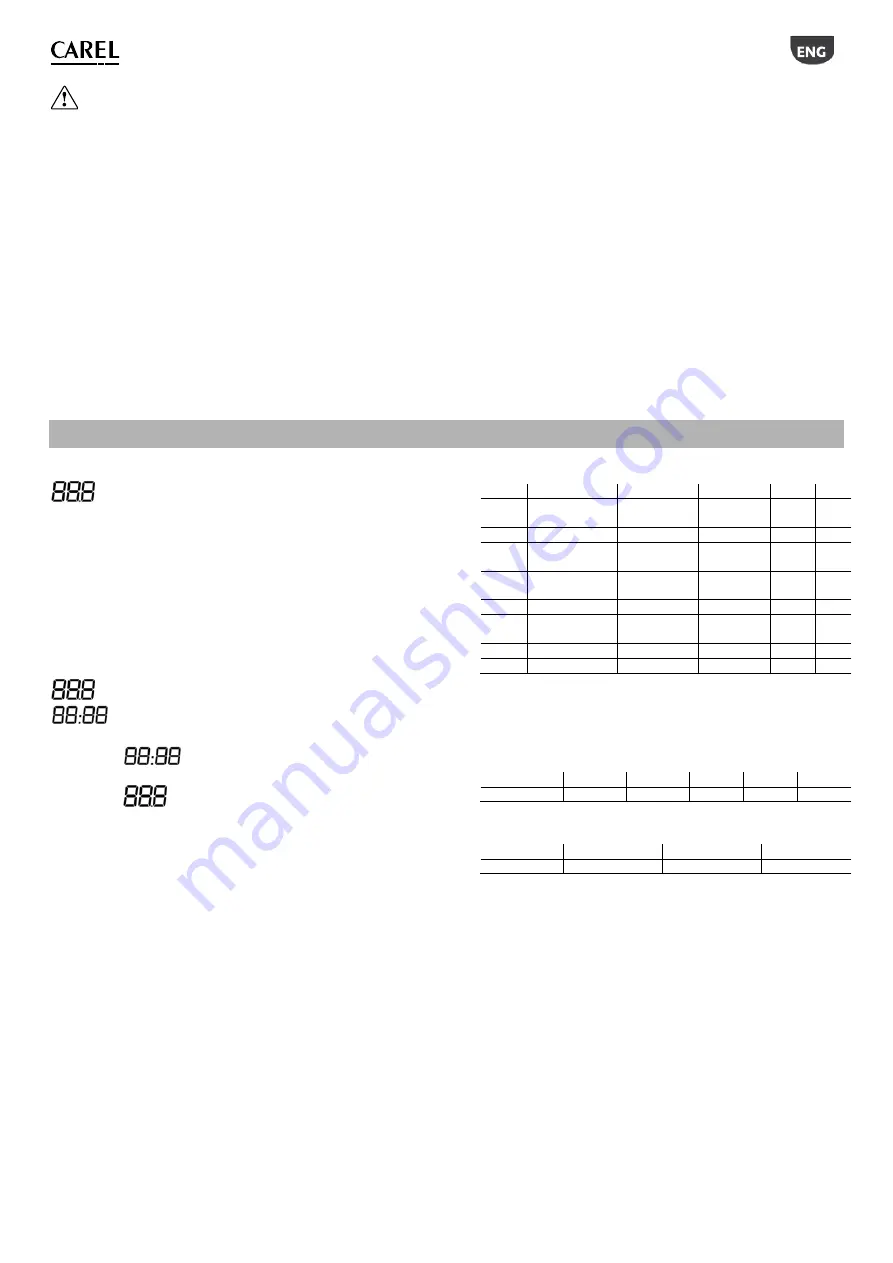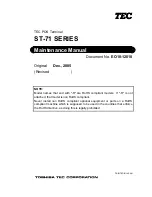
pAD +030220873 - rel. 1.2 18.01.2013
26
Further information
1.
A power supply other than the one specified may
seriously damage the system.
2.
Important: if the device is used in a way that is not
specified by the manufacturer, the protection of the
device may be compromised.
3.
Use cable ends suitable for the corresponding
terminals. Loosen each screw and insert the cable
ends, then tighten the screws. When the operation is
completed, slightly tug the cables to check they are
sufficiently tight.
4.
To clean the display use a soft cloth. Do not use
water.
5.
Operation at particularly low temperatures may cause
a visible decline in the response speed of the display.
This should be considered normal and does not
indicate a malfunction.
6.
The terminal must be fastened to the wall in such a
way as to allow the recirculation of air through the slits
on the rear shell. Avoid places where the room
temperature measurement may be altered, for
example outside walls, near doors leading to the
outside or in direct sunlight.
7.
Separate the cables running to the device from cables
that supply inductive loads and power cables, so as to
avoid possible electromagnetic disturbance. Never
use the same conduits for the power cables (including
other electrical cables) and serial communication
cables. Do not install the communication cables in the
immediate vicinity of power devices (contactors,
circuit breakers or similar).
4.
CONFIGURATION AND STARTING
When started, the pAD, after having completed the initialisation procedure, shows
in the temperature display for a few seconds, indicating that it is researching
for the pCO controller connected to the data line.
To access the parameters, proceed as follows:
4.
press the UP button;
5.
within three seconds press the DOWN button;
6.
when “
PAr
” is displayed in the main area, release the DOWN
button while holding the UP button and press KEY6 within
three seconds
.
Procedure for setting the parameters
In this mode, all the symbols are off, except for the following fields:
indicates the value of the parameter currently being set;
indicates the name of the parameter currently being set.
To set the parameters, proceed as follows:
5.
The
field flashes. Use the UP/DOWN buttons to select the
parameter to be set, then press KEY6 or (PRG).
6.
The
field flashes. Use the UP/DOWN buttons to set the desired
value, then press KEY6.
7.
Repeat the actions from point 1 until completing all the desired operations
8.
To exit the parameter setting procedure, saving the changes made, simply
hold KEY6 for 3 seconds.
To exit the parameter setting procedure without saving the changes, simply wait 60
seconds from when the last button was pressed, or press KEY4; 45 seconds after the last
button was pressed the name or the value of the parameter flashes.
If the communication parameters are changed (Ad01 and/or Br01), communication will
be re-initialised by the pAD.
The table below describes the meaning of the operating parameters.
Name Description
Min
Max
UOM Def.
Ad01
pAD pLAN
network address
1
32
-
2
Ad02 *
Supervisor address 1
255
-
1
Br01
pLAN baud rate
0 (62.5 Kbps)
1 (115.2
kbps) -
0
Br02 *
Supervisor baud
rate 0 4
-
4
En01
Enable buzzer
0
1
-
1
Pc01
Room probe
calibration -9.9
+9.9 °C/°F
0.0
rEL
Firmware release
-
-
-
-
Prot *
Select protocol
1
3
1
1
*
indicates the parameters that are only available in the versions that support the
Carel/Modbus protocols.
In the models configured for the Carel/Modbus protocols, Supervisor baud rate values
correspond to the following parameter settings:
Br02
0 1 2
3
4
Baud rate
1200 2400 4800
9600
19200
The protocol used is set by parameter
Prot
, which can have the following values:
Prot
1 2 3
protocol pLAN
Carel
Modbus
Summary of Contents for ADPB003000
Page 1: ...pAD Ambient Display terminal User manual...
Page 2: ......
Page 3: ......
Page 6: ...6...
Page 14: ...pAD 030220873 rel 1 2 18 01 2013 16 6 2 Alr oLn pLAN AtE Ahu pAD...
Page 16: ...pAD 030220873 rel 1 2 18 01 2013 18...
Page 17: ......
Page 20: ......
Page 30: ...pAD 030220873 rel 1 2 18 01 2013...
Page 31: ......









































